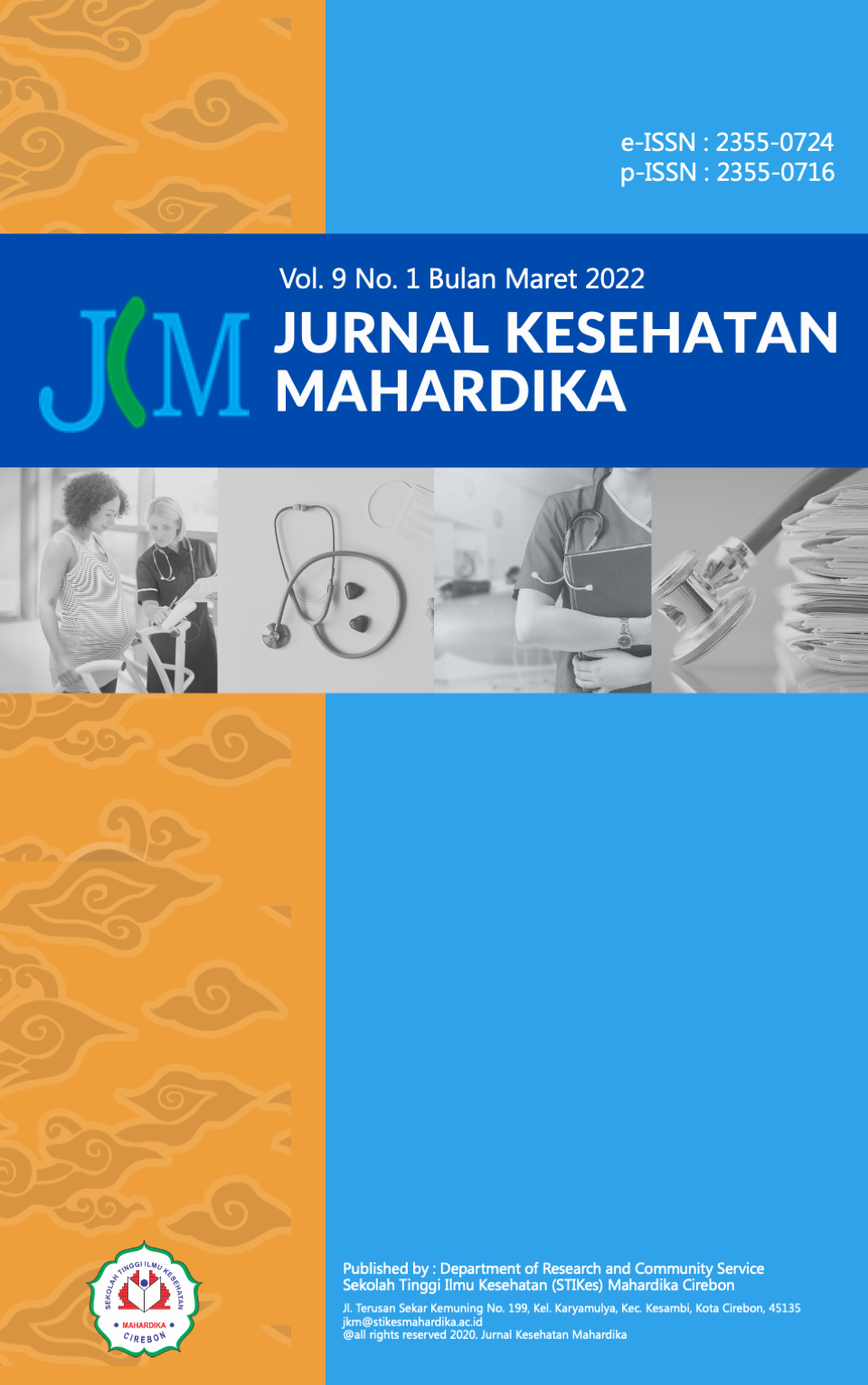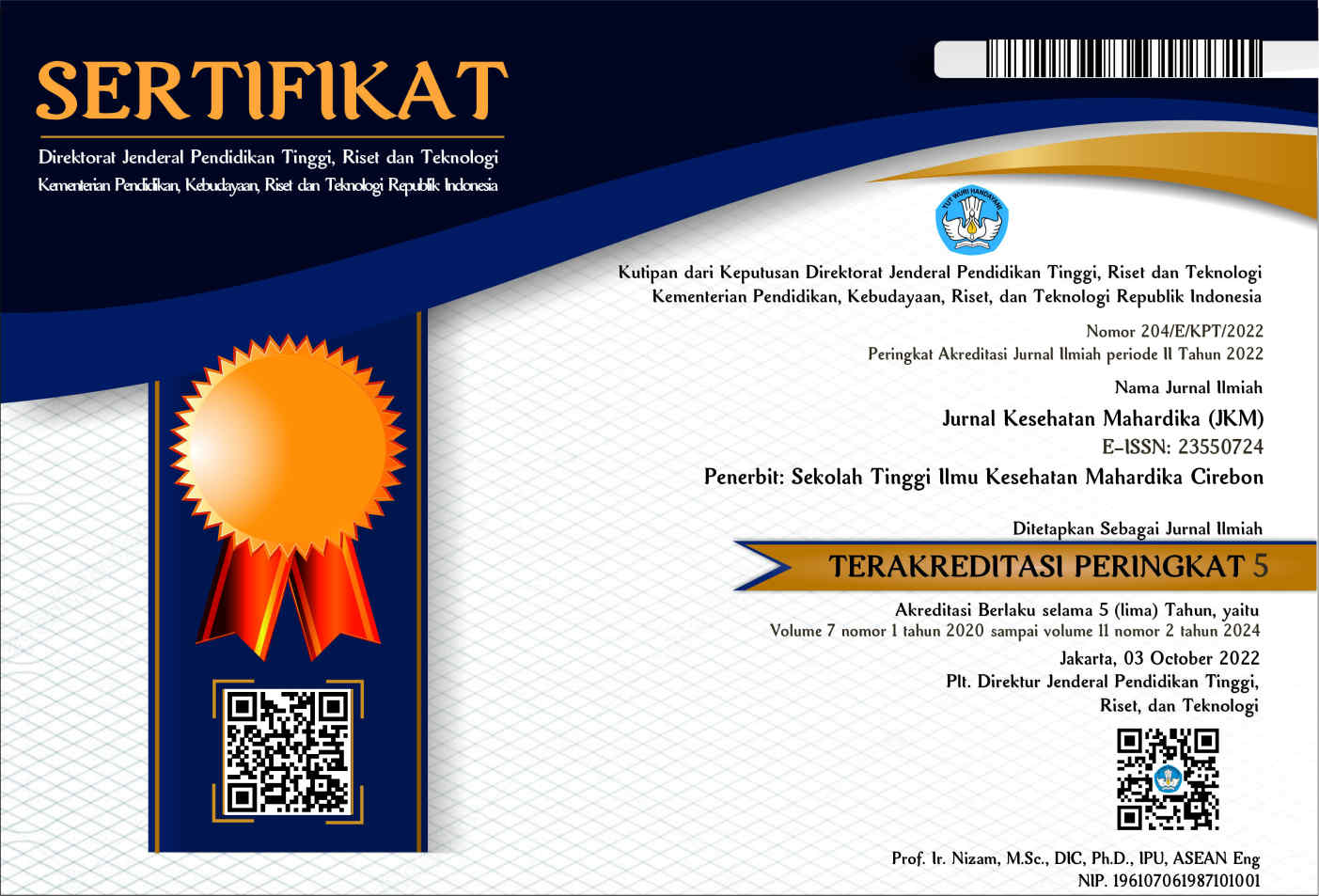Literature Study: History of Infections and Stunting in Toddlers
Keywords:
Infectious diseases, Stunting, toddlersAbstract
Malnutrition is one of the causes of the low quality of human resources in Indonesia. Malnutrition that occurs chronically can cause not optimal linear growth (stunting) which will have a short-term and long-term impact on the prevalence of stunting in toddlers in Indonesia by 30.8%. Indonesia is included in the third country with the highest prevalence in the Southeast Asian region, with the average prevalence of stunted toddlers in 2005-2017 is 36.4%. The direct and indirect causes of stunting are inadequate nutrient intake and infectious diseases. The goal is to examine how much risk toddlers who have a history of infectious diseases experience stunting. The method used is review literature through google scholar databases for Indonesian journals and overseas journals at the https://scholar.google.co.id/ website address. Article searches use the keyword "infectious diseases and stunting" with the timing of the 2015-2021time span. Based on the results of several articles, it was found that infectious diseases in toddlers contribute to an increased risk of stunting by 3-8 times greater than toddlers who do not have a history of infectious diseases. History of infectious diseases in toddlers is a protective factor for stunting so as to prevent the occurrence of infectious diseases through environmental health and the provision of clean water in the household can be one of the efforts in preventing stunting in toddlers
References
Candra, A, 2020, Epidemiologi Stunting, Cetakan Ke 1, Fakultas Kedokteran Universitas Diponegoro. Semarang.
Flora, R. 2021, Stunting Dalam Kajian Molekuler, Cetakan pertama, Universitas Sriwijaya, Palembang.
Djauhari, T.2017. Gizi dan 1000 HPK. Saintika medika, 13(2), 125-133.
Kusumawati, E ., Rahardjo, S., dan Sari, H. 2015. Model pengendalian faktor Risiko Stunting Pada Anak Usia di Bawah Tiga Tahun. Kesmas: Jurnal Kesehatan masyarakat Nasional (National Public Health Journal), 9 (3), 249-256.
Asiah, A., Yogisutanti, G., dan Purnawan, A. I.2020. Asupan Mikronutrien dan Riwayat Penyakit Infeksi Pada Balita Stunting di UPTD Puskesmas Limbangan Kecamatan Sukaraja Kabupaten Sukabumi. Journal of Nutrition College, 9(1), 6-11.
Sari, E. M., Juffrie, M., Nurani, N., dan Sitaresmi, M. N. 2016. Asupan protein, kalsium dan fosfor pada anak stunting dan tidak stunting usia 24-59 bulan. Jurnal Gizi Klinik Indonesia, 12(4), 152-159
Subroto, T., Novikasari, L., & Setiawati, S. 2021. Hubungan Riwayat Penyakit Infeksi Dengan Kejadian Stunting Pada Anak Usia 12-59 Bulan. JKM (Jurnal Kebidanan Malahayati), 7 (2), 200-206.
Dewi, N. T., dan Widari, D.2018. Hubungan Berat Badan Lahir Rendah dan Penyakit Infeksi dengan Kejadian Stunting pada Baduta di Desa maron Kidul Kecamatan Maron Kabupaten Probolinggo. Amerta Nutrition, 2(4), 373-381.
Dewi, I.A.K.C., dan Adhi, K.T. 2016. Pengaruh Konsumsi Protein dan seng serta riwayat penyakit infeksi terhadap kejadian stunting pada anak balita umur 24-59 bulan di wilayah kerja puskesmas nusa penida III. Arc Com Health, 3(1), 36-46
Sutriyawan, A., Kurniawati, R. D., Rahayu, S., & Habibi, J. (2020). Hubungan status imunisasi dan riwayat penyakit infeksi dengan kejadian stunting pada balita: studi retrospektif. Journal Of Midwifery, 8(2), 1-9
Maulidah, W et.al. 2019. Faktor yang berhubungan dengan kejadian stunting pada balita di Desa paduman Kecamatan Jelbuk Kabupaten jember. Ilmu Gizi Indonesia, vol. 02 (Februari 2019), hal : 89-100
Pratama, B., Angraini, D. I., dan Nisa, K. 2019. Penyebab Langsung (Immediate Cause) yang mempengaruhi Kejadian Stunting Pada Anak. Jurnal Ilmiah Kesehatan Sandi Husada, 8(2), 299-303.
Milward, D. 2017. Nutrition, infection and stunting: The roles of deficiencies of individual nutrients and food, and of inflammation, as determinants of reduced linear growth of children. Nutrition Research Reviews, 30(1), 50-72.
Julianti, E., dan Elni, E. 2020. Determinan of Stunting in children aged 12-59 month. Nurse Media Journal of Nursing, 10(1), 36-45

Published
How to Cite
Issue
Section
Copyright (c) 2022 Jurnal Kesehatan Mahardika

This work is licensed under a Creative Commons Attribution-NoDerivatives 4.0 International License.












